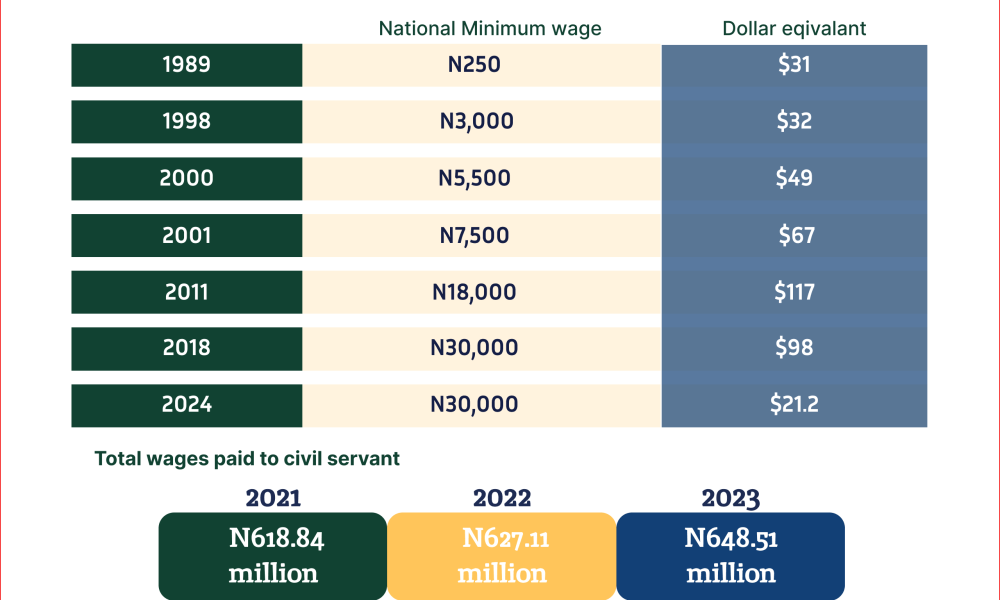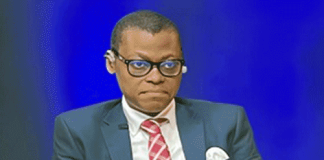🌿 Ruzu Non-Alcoholic Herbal Bitters
Ruzu Non-Alcoholic Herbal Bitters is a natural health supplement specially formulated to:
- ✅ Promote general wellness
- ✅ Detoxify the body
- ✅ Support the treatment of various ailments
Made from a powerful blend of 100% organic and medicinal herbs, Ruzu is completely alcohol-free, making it ideal for:
- 👪 All age groups
- 🌱 Health-conscious individuals
- 🌿 Anyone seeking non-alcoholic herbal remedies
Whether you're looking to boost your vitality, cleanse your system, or support healing the natural way, Ruzu Bitters offers a trusted herbal solution.
On Monday, June 3rd, the Nigeria Labour Congress (NLC) and the Trade Union Congress (TUC) embarked on a nationwide strike to protest the increment of the Nigerian minimum wage.
The union’s proposal was for the federal government to pay N615,000 as a new minimum wage. This is 1950 per cent higher than the country’s N30,000 minimum wage. However, several meetings between the unions, the federal government and the National Assembly have continuously ended in deadlock.
In one of those meetings, the government had proposed a review of N60,000 but that was not accepted by the union.
While some experts and critics have condemned the union’s proposal saying the figure is outrageous and cannot be sustained, other supporters say that the country’s expenses on frivolous items found in the 2024 budget indicate that the government can pay the proposed amount by the labour union.
According to BudgIT, a civic organisation, about 15 states in Nigeria have yet to implement the N30,000 minimum wage for their workers since it was signed into law in 2019.
BudgiT noted, in its 2023 State of States report, that even though 15 states are yet to implement the minimum wage of N30,000, the 36 states of the federation grew their cumulative personnel cost by 13.44 per cent to N1.75 trillion in 2022 from N1.54 trillion in 2021.
With this data, it is unexpected that the 36 states might have the capacity to pay the wage. A report by Ripples Metrics detailed how states shared the federal allocation in 2023 with more of the state depending more on this allocation than the revenue generated.
READ ALSO:RipplesMetrics: Assessing Nigeria’s economy, one year after Tinubu’s assumption
RipplesMetics had reported how an average Nigerian struggles with the current cost of living especially under the present administration.
The trend in the numbers
An overview of the minimum wage shows that minimum wage has been reviewed about seven times between 1981 to 2024. However, while there was an increase over the years, when compared on a global scale, especially to the dollar exchange market rate, the wage decreased.
For instance in 1989 when the minimum wage was N250, it was equivalent to $31. Also in 1998 when the wage increased to N3,000, it was exchanged for $32, while in 2000, the minimum wage rose to N5,500 and was exchanged for $49.
In 2001, the wage increased to N7,500 and it was exchanged for $67. In 2011, when the wage increased to N18,000 the dollar equivalent was $117.
But by 2018, the rate was reviewed and implemented in 2019 to N30,000 the impact of the economy began to affect the equivalent rate. The rate fell from $98 to $65 in 2023 and $21.2 in 2024.
Data from the National Bureau of Statistics showed that, between 2020 and 2023, there was a continuous increase in wages paid to civil /public servants over the reporting period under review.
In 2020, N618.84 million was reported, it rose to N627.11 million and N648.51 million in 2021.
This would mean that if a new minimum wage is agreed upon, it might translate to an increase in the wages paid within the year.
For context, as at the last data published by the States Fiscal Transparency, Accountability, and Sustainability (SFTAS) Performance Assessment, there were about 858,668 civil servants in Nigeria. If each of these workers were paid a minimum wage of N615,000, the total wages paid in a year would amount to N528.08 billion.
By: James Odunayo
If you like what we do, and are ready to uphold solutions journalism, kindly donate to the Ripples Nigeria cause.
















